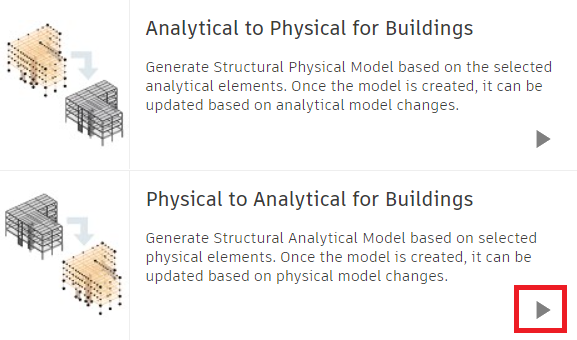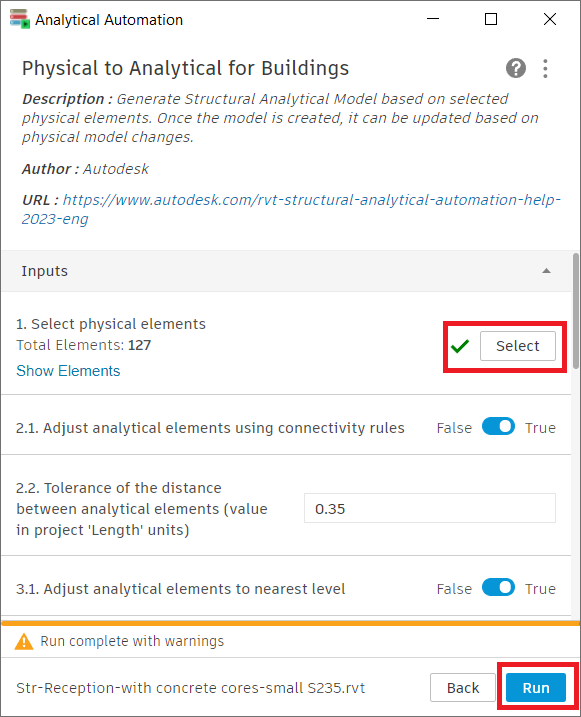This article explains how to send a Revit model to Tekla Structures, using BIM Expert.
1. Preparation in Revit
The transfer is based on the analytical model. So in Revit, you need to create an analytical model first. You can use the Analytical Automation command in Revit or create the analytical elements manually. The quality and coherence (connection between elements) of the analytical model is not relevant, as the purpose is mainly to send the physical model to Tekla Structures.
2. Send the Revit model to Tekla Structures
2.1 From Revit to BIM Expert
There are 2 ways to send models from Revit to BIM Expert:- Starting in Revit: in the BIM Expert tab page, select ‘Export’.

- Starting in BIM Expert: click ‘Model > Import’ and select the Revit plugin. In case you have multiple Revit models open, BIM Expert will ask to select your model to be transferred.

2.1.1 Settings
You can have all (or a selection of) analytical elements exported. All elements is the most likely option.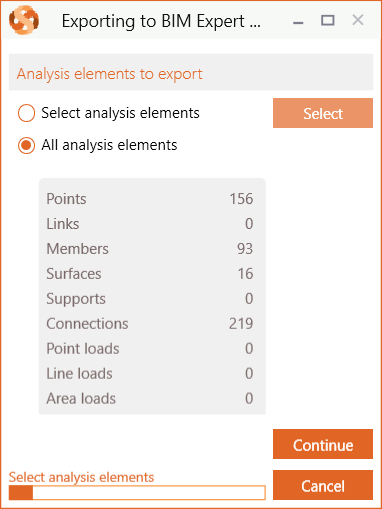 Next, the Revit sections and materials must be mapped with BIM Expert’s section and material database. BIM Expert will try to find as many automatic mapping matches as possible. In case all sections and materials find a match, you will not see any dialogs for mapping.
Next, the Revit sections and materials must be mapped with BIM Expert’s section and material database. BIM Expert will try to find as many automatic mapping matches as possible. In case all sections and materials find a match, you will not see any dialogs for mapping.
2.1.2 Material mapping
Database materials such as steel (e.g. S235, ASTM-Grades), concrete (e.g. C25/30, M50) and timber (e.g. C24, D50, GL28c) are mapped automatically. In some cases, the match is not automatically found, because the name differs (Concrete grade C25 instead of Concrete grade C25/30). In that case, you can select the correct material from the database. Tip: When searching an item in the database, type the first letters of the name to find it more quickly.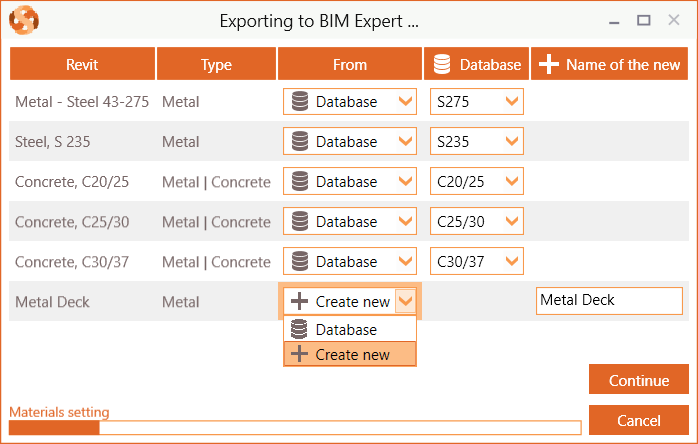 If you cannot find a suited counterpart in the BIM Expert database, the material can be added as new.
If you cannot find a suited counterpart in the BIM Expert database, the material can be added as new.
2.1.3 Section mapping
Database sections (such as I, H, UB, UC, W, C, U, O, ☐ and L sections) are mapped automatically. In some cases, the match is not automatically found, because the name differs (e.g. name is HEB300 – S235 instead of HEB300). In that case, you can select the correct cross-section from the database. Tip: When searching an item in the database, type the first letters of the name to find it more quickly. Parametric sections (e.g. rectangles, circle, trapezium, …) are not in the database. They should always be added as new.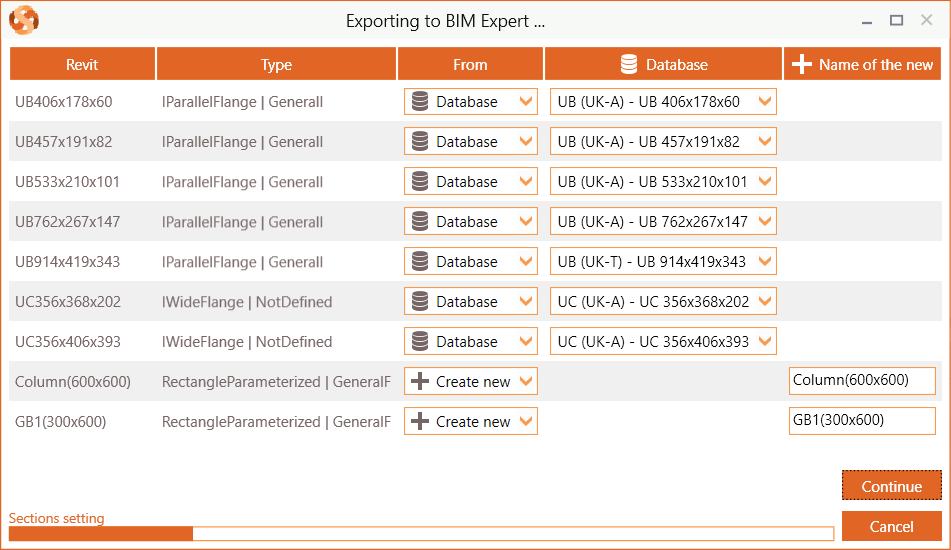 The model is now in BIM Expert.
The model is now in BIM Expert.
2.2 From BIM Expert to Tekla Structures
In the Model tab, select ‘Export’. Next, choose the destination software, namely Tekla Structures. Click ![]() to continue.
to continue.
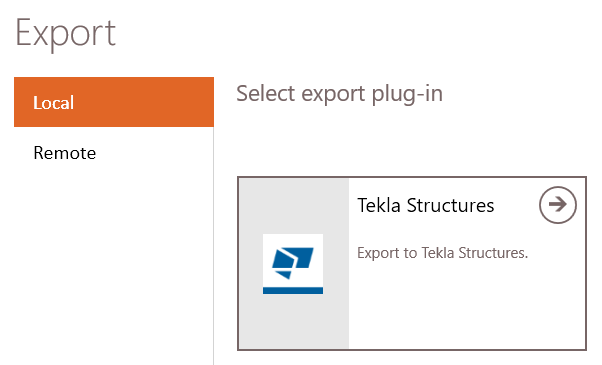
2.2.1 Settings
Choose ‘Export considering an analysis model’ and hit ‘Continue’.
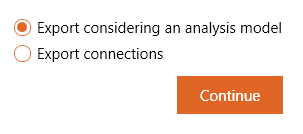
Select the desired version of Tekla Structures, select the desired options and click ‘Export’.
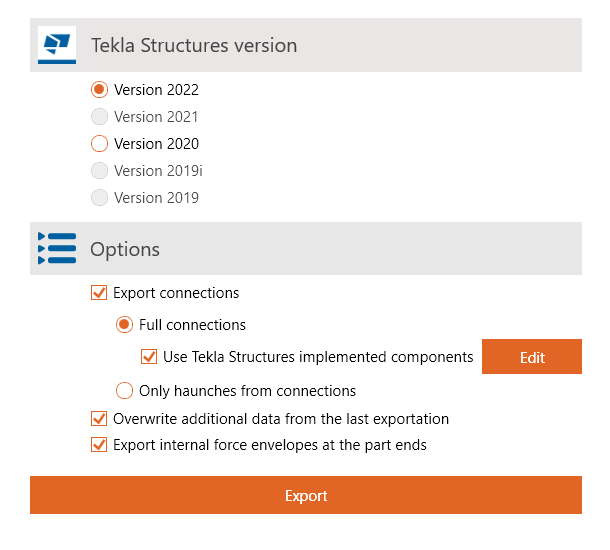
In case the Tekla Structures project has already a model inside, BIM Expert will ask you how the new analysis model should be handled:
- Option 1: replace the old analysis model by the new one
- Option 2: create a new analysis model + give the new analysis model a name
- Option 3: copy the properties and settings of the old analysis model and export the new model to this.
In case the Tekla Structures project is empty, you can opt to specify the insertion data:
- ‘Yes’ to define the insertion data.
- ‘No’ to use the default insertion data.
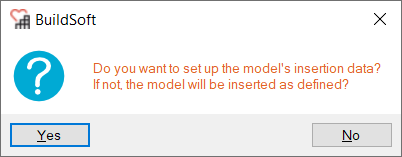
2.2.2 Material mapping
In case not all sections or materials can be automatically mapped, you will see a dialog window to map BIM Expert’s materials with Tekla Structures materials. Click on the button with the 3 dots ![]() to open Tekla Structures’ material library and search for a match.
to open Tekla Structures’ material library and search for a match.
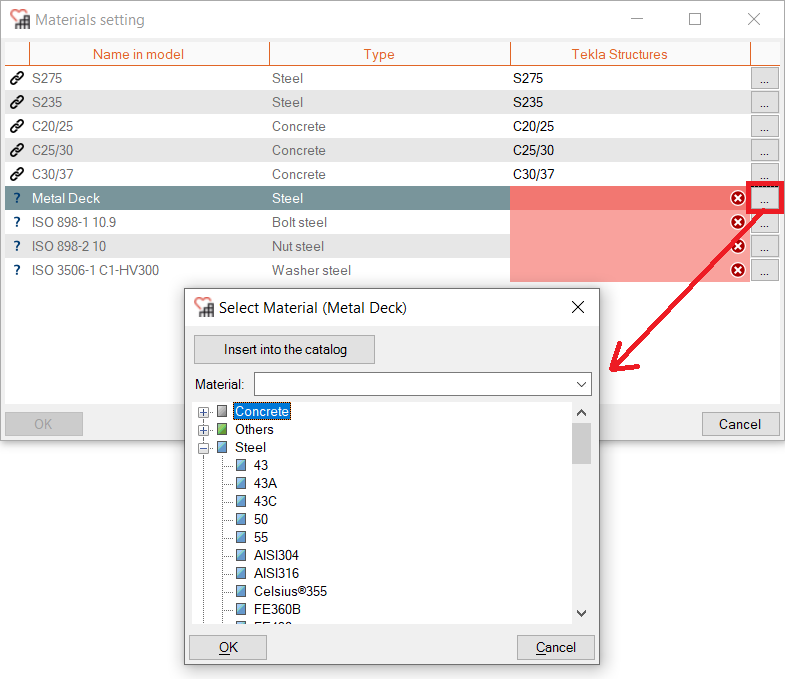
Alternatively, you could type in the Tekla Structures’ material name directly.
2.2.2 Section mapping
In case not all sections can be automatically mapped, you will see a dialog window to map BIM Expert’s section with Tekla Structures’ sections. Click on the button with the 3 dots ![]() to open Tekla Structures’ section library and search for a match. Tekla Structures’ section library depends on the environment that you have chosen. If no sections at all can be mapped, you might want to restart Tekla Structures with a different environment.
to open Tekla Structures’ section library and search for a match. Tekla Structures’ section library depends on the environment that you have chosen. If no sections at all can be mapped, you might want to restart Tekla Structures with a different environment.
2.2.3 Preview & creating the model
The model will now be previewed in Tekla Structures and you get an overview of all new elements, native Tekla Structures elements. You could choose to leave some elements out by unchecking the ‘Accept‘ box, but in most cases you click ‘OK’ here.
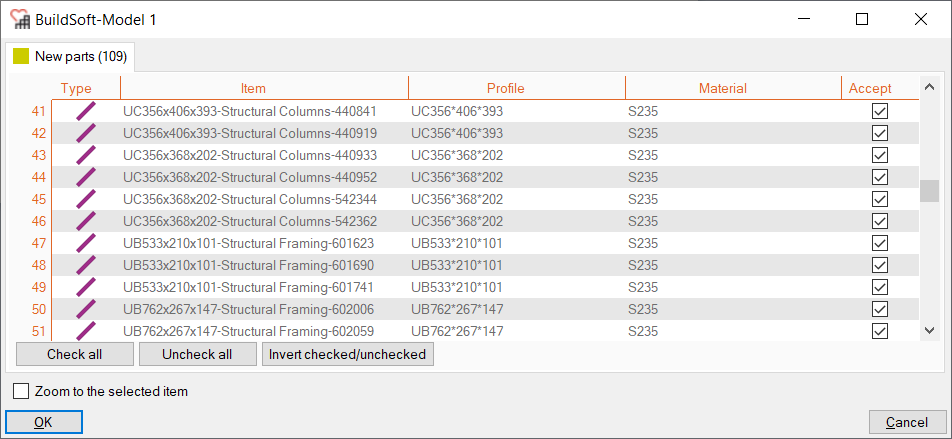
2.2.4 Connections and components
Once the whole model is in Tekla Structures, BIM Expert will start the connection conversion. Whenever possible BIM Expert will convert connections to Tekla Structures components. You will first get an overview of all connections that are recognized as components. When clicking the little eye button ![]() , you get a pop-up window showing the connections. You could choose to leave some elements out by unchecking the ‘Accept‘ box, but in most cases you click ‘OK’ here.
, you get a pop-up window showing the connections. You could choose to leave some elements out by unchecking the ‘Accept‘ box, but in most cases you click ‘OK’ here.
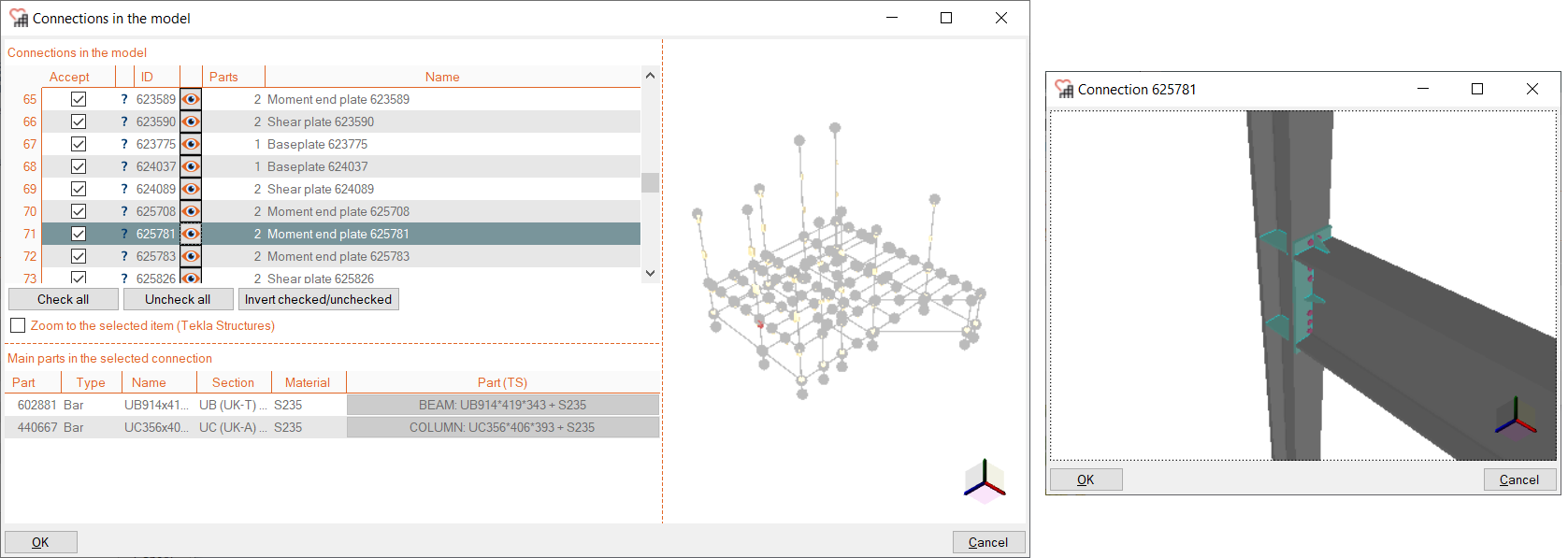
If there are materials of sections to be mapped, they will appear in the next pop-up window. In the column ‘Bolt Assemblies Tekla Structures’ you can set a (different) bolt material.
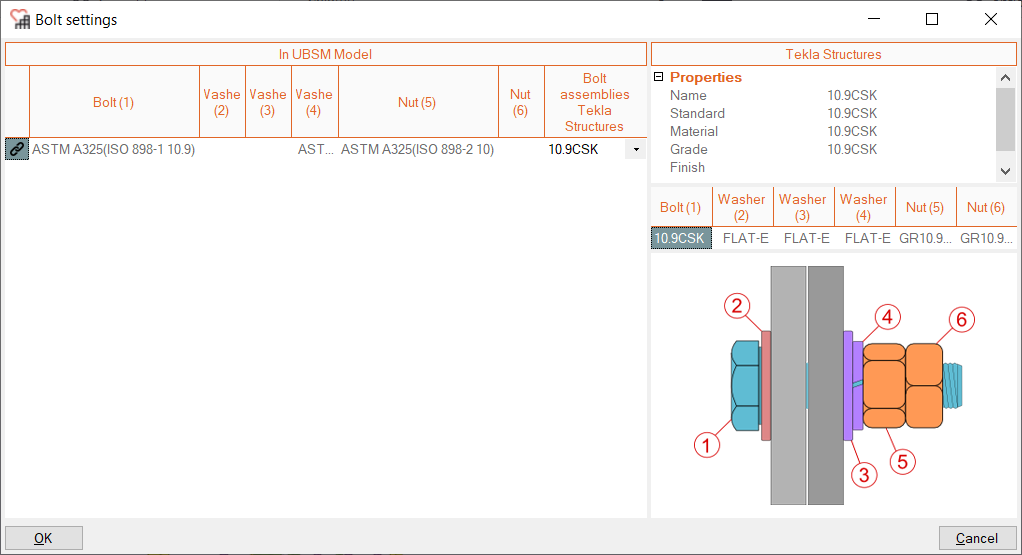
3. Final steps in Tekla Structures
The model is now in Tekla Structures, ready for the next steps in the project process.

 Once the Analytical Automation dialog pops up, you choose ‘Physical to Analytical’, by clicking the play button.
Once the Analytical Automation dialog pops up, you choose ‘Physical to Analytical’, by clicking the play button.